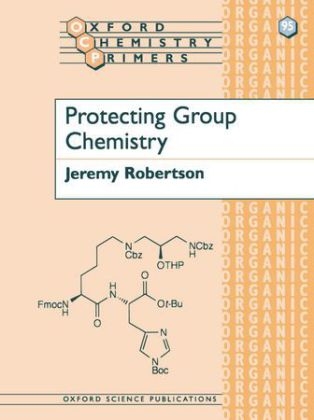
Protecting Group Chemistry
Seiten
2000
Oxford University Press (Verlag)
978-0-19-850275-3 (ISBN)
Oxford University Press (Verlag)
978-0-19-850275-3 (ISBN)
Protecting Group Chemistry provides an overview of methods that allow specific sites within an organic molecule to be manipulated without affecting other sites. The book emphasises the link between the mechanisms of organic chemistry and the choice of specific protecting groups that block chemical reactivity at those sites that must remain unaffected.
Protecting Group Chemistry provides an overview of the general methods that are used to block the reactivity of - i.e. protect - specific functional grops thus allowing others, present within the same molecule, to be manipulated unambiguously. An introductory chapter outlines protecting group strategy, relevant aspects of functional group reactivity, temporary protection, and introduces the concept of protecting group devices as an aid to unifying the wide range of available methods. The rest of the book is divided on the basis of broad classes of the experimental conditions that lead to cleavage of each protecting group (acid/electrophile, base/nucleophile, oxidising or reducing agent). The treatment differs from traditional texts in that it places the emphasis on making a connection between the fundamental mechanisms of organic chemsitry - ionisation, substitution, addition, elimination, oxidation and reduction, etc. - and how a particular protecting group can best be selected in a given situation.
Protecting Group Chemistry provides an overview of the general methods that are used to block the reactivity of - i.e. protect - specific functional grops thus allowing others, present within the same molecule, to be manipulated unambiguously. An introductory chapter outlines protecting group strategy, relevant aspects of functional group reactivity, temporary protection, and introduces the concept of protecting group devices as an aid to unifying the wide range of available methods. The rest of the book is divided on the basis of broad classes of the experimental conditions that lead to cleavage of each protecting group (acid/electrophile, base/nucleophile, oxidising or reducing agent). The treatment differs from traditional texts in that it places the emphasis on making a connection between the fundamental mechanisms of organic chemsitry - ionisation, substitution, addition, elimination, oxidation and reduction, etc. - and how a particular protecting group can best be selected in a given situation.
Jeremy Robertson, MA DPhil, University Lecturer in Organic Chemistry and Fellow of Brasenose College, Oxford.
1. Introduction ; 2. Acid-labile protecting groups ; 3. Nucleophile/base-labile protecting groups ; 4. Redox deprotection
| Erscheint lt. Verlag | 3.8.2000 |
|---|---|
| Reihe/Serie | Oxford Chemistry Primers |
| Zusatzinfo | numerous line illustrations |
| Verlagsort | Oxford |
| Sprache | englisch |
| Maße | 188 x 246 mm |
| Gewicht | 221 g |
| Themenwelt | Naturwissenschaften ► Chemie ► Anorganische Chemie |
| Naturwissenschaften ► Chemie ► Physikalische Chemie | |
| ISBN-10 | 0-19-850275-3 / 0198502753 |
| ISBN-13 | 978-0-19-850275-3 / 9780198502753 |
| Zustand | Neuware |
| Haben Sie eine Frage zum Produkt? |
Mehr entdecken
aus dem Bereich
aus dem Bereich
Buch | Hardcover (2024)
Springer Spektrum (Verlag)
CHF 89,95


